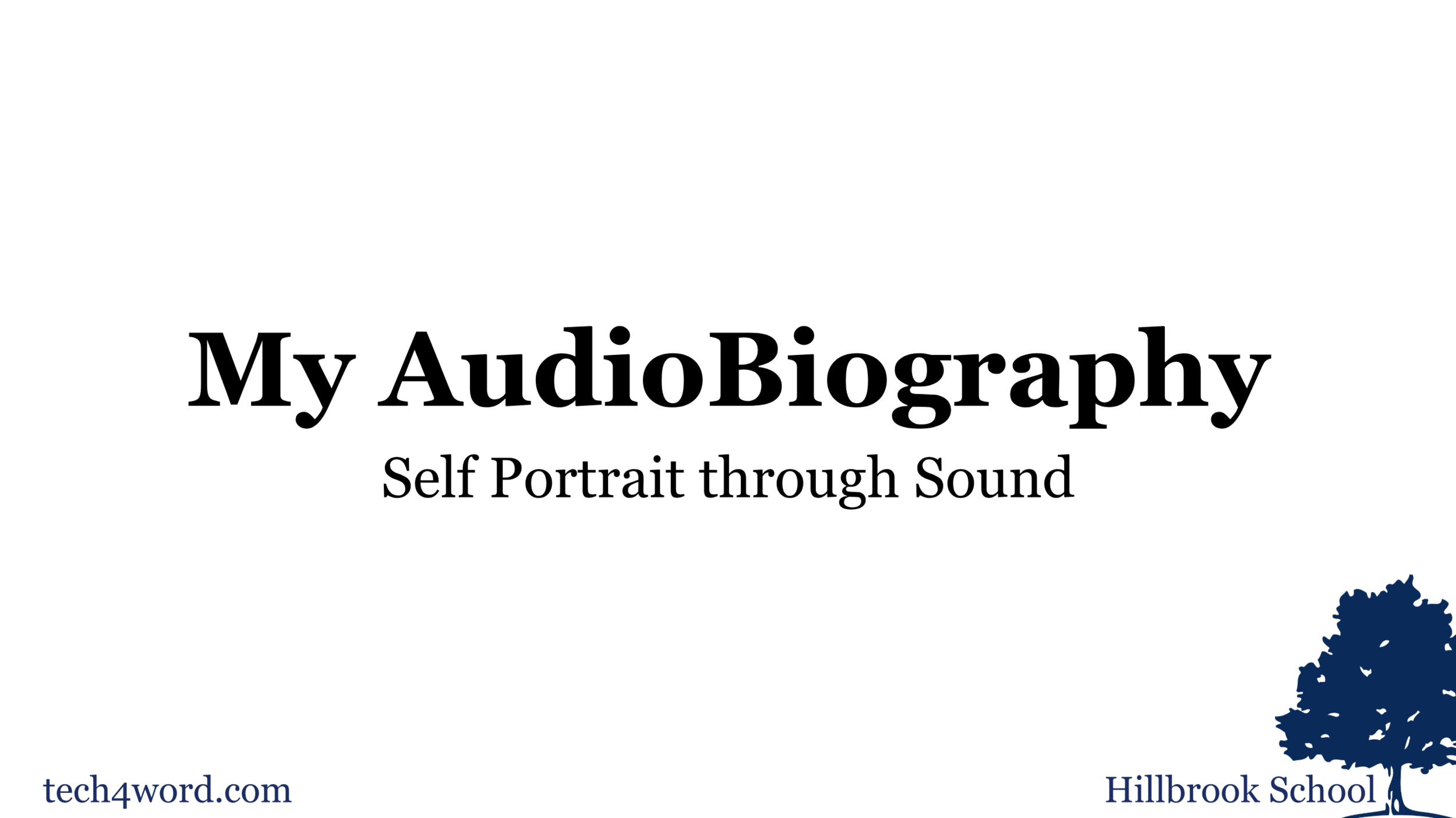"Calm, relaxed, I imagine a water droplet dripping. Sitting at edge of a lake, eyes closed, relaxed. Quiet suspense building, then lake quavers. Let’s out vibrations. Suddenly, it’s like a purge, and humans are being hunted. I hear voices, warnings, as they get closer. It settles, and I hear more voices, fading off. I start running, and reach a rural town. It’s run down, and I start hearing things, from people. Good, bad, all of it. It settles, as aliens leave, and peace is restored."
--Varun (6th grade student)
This year I was tasked to design an art course for 6th grade students at Hillbrook. The class was to be focused on Sound (my specialty and personal passion) and have an overarching theme of "Self Portrait." All four 6th grade art classes would share the same portrait theme. This has been a very fun and challenging project! I will most likely make several posts around designing and teaching this class, as I have many insights, "learns" and cool experiences to share.
This post, however, is dedicated to introducing you to the pure power of SOUND REFLECTION. This is not to be confused with meditation, musicology, music theory or acoustic building design. This, my friends, is a powerful gateway to the mindful observation of space, mood, internal dialogue and storytelling. It is only a part of the larger "sound art" class, but such a key element in opening these students' ears, minds and souls to the strength of sound.
To facilitate a "sound reflection" experience (either by yourself or with a group of students/peers), follow these steps:
1. Choose a track to play. This can be instrumental or with vocals, but instrumental tracks tend to be more evocative and leave room for creativity in reflection. It helps helps to choose a track that is 5 min. or less (if possible).
2. Provide guidelines for listening. Before the first sound reflection, have a conversation around how to listen with a mindful focus. Key things to think about are: What imagery does this sound bring to mind? Should I write something or draw an illustration? Will it be a story or a list of whatever descriptives come to mind? Talk with your students about all the ways and mediums with which they can reflect. There is no "right or wrong" way to reflect.
3. Provide a workflow/template. It helps to provide students with a central place to document these reflections. I decided to make a Google Doc template titled "Sound Reflection Whiteboard," where they can write entries for each reflection. I assigned it via Google Classroom and gave each student a copy. It is expected that every reflection is in some way inserted into the document. If they choose to draw a picture, they can take a photo of the drawing and include it in the document.
4. Find a good time. In my class, I decided to do these reflections almost every time we meet, and always at the very beginning of the class period. It brings calm, focus and good discussion afterwards, leading to more mindful learning for that hour, not to mention the fact that deep listening and discussion can strengthen community in the classroom.
5. Share and discuss. Have 3-4 students share each time. Make it optional. Over time, more students will feel compelled to share, based on their relation to the particular track that day. You may be surprised at the deep insight and emotional intelligence that can come to the surface when stimulated by sound.
Refer to the slides in my previous post (Bridge 2 Tech) for links to other student Sound Reflection examples.
Any questions or insights from your own teaching experience? Let me know in the comments, or feel free to reach out via Twitter at @eh48 or email at ehendricks@hillbrook.org.

















